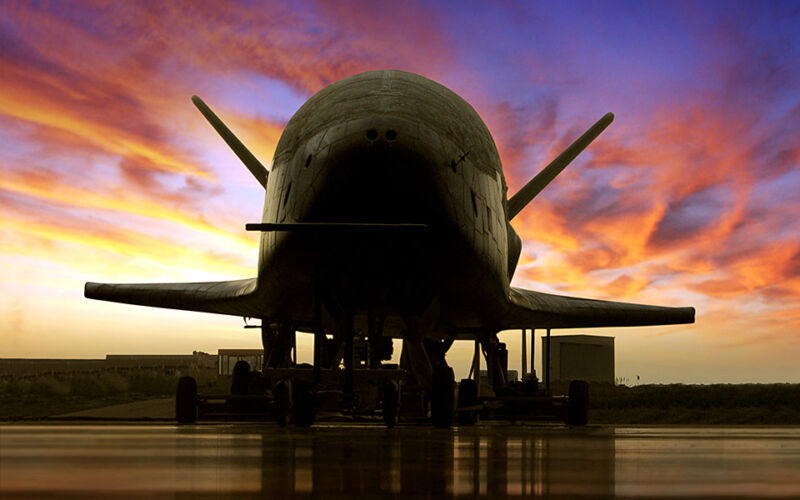
Enlarge / File photo of an X-37B spaceplane.Boeing
It turns out some of the informed speculation about the US military’s latest X-37B spaceplane mission was pretty much accurate.
On December 28, the winged spacecraft launched into orbit atop a SpaceX Falcon Heavy rocket, which is notably larger than the Atlas V and Falcon 9 rockets used for previous X-37B missions. This led to speculation that the X-37B would reach higher altitudes than before, and a discovery from Tomi Simola, a satellite tracking hobbyist near Helsinki, Finland, seems to confirm this suspicion.
Simola reported on social media and on the SeeSat-L forum that he detected an unidentified object using a sky-watching camera. The camera continuously observes a portion of the sky to detect moving objects in space, while a software program helps identify known and unknown objects.
Amateur observations of the spaceplane indicate it is flying in a highly elliptical orbit ranging between 201 and 24,133 miles in altitude, inclined at 59.1 degrees to the equator. This aligns closely with predictions made by hobbyist trackers before the launch, using information about the Falcon Heavy’s trajectory and drop zones for the rocket’s core booster and upper stage.
The Space Force has not disclosed any information about the orbit of the X-37B. It typically took amateur trackers less time to locate it when it orbited at lower altitudes on previous missions. Despite the secrecy, it’s likely that the US military’s adversaries already knew where the spaceplane was flying.
This is the seventh flight of an X-3B spaceplane since the first one launched in 2010. The Space Force stated that this flight is focused on “a wide range of test and experimentation objectives,” including flying in “new orbital regimes” as stated by military officials.
The military has two Boeing-built X-37B spaceplanes in inventory, which are reusable and designed to spend multiple years in space with the use of solar power, before returning to Earth for a landing on a three-mile-long runway at Vandenberg Space Force Base in California or at NASA’s Kennedy Space Center in Florida. It measures 29 feet long and resembles a miniature version of NASA’s retired space shuttle orbiter, with wings, landing gear, and thermal protection tiles.
The X-37B has a cargo bay for payloads and a service module for additional experiments, payloads, and small satellites that can deploy in orbit to perform their own missions. The Space Force has stated that its experiment package includes investigations into new “space domain awareness technologies.” NASA is also conducting an experiment on the X-37B to measure how plant seeds respond to sustained exposure to space radiation.
The secrecy surrounding the X-37B has sparked much speculation about its purpose, with some suggesting that it is a classified weapons platform in orbit. However, analysts believe it is more likely a testbed for new space technologies. The unusual elliptical orbit on this mission is similar to that used for some of the Space Force’s satellites designed to detect and warn of ballistic missile launches.
McDowell speculated that the X-37B could be testing out an infrared sensor for future early warning satellites, cautioning that this would be “just a wild speculation.” Nonetheless, it seems that there is no longer a need to speculate about where the X-37B is flying.














